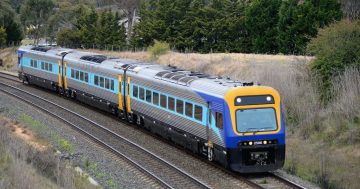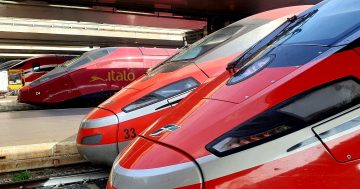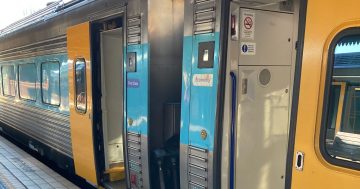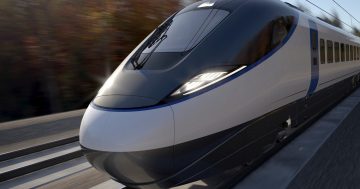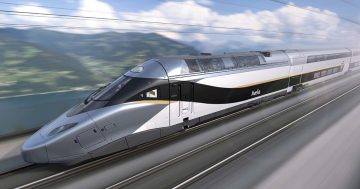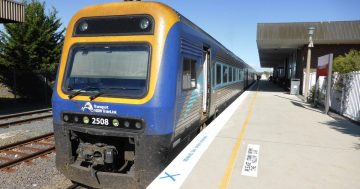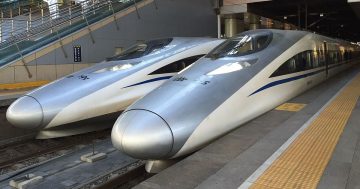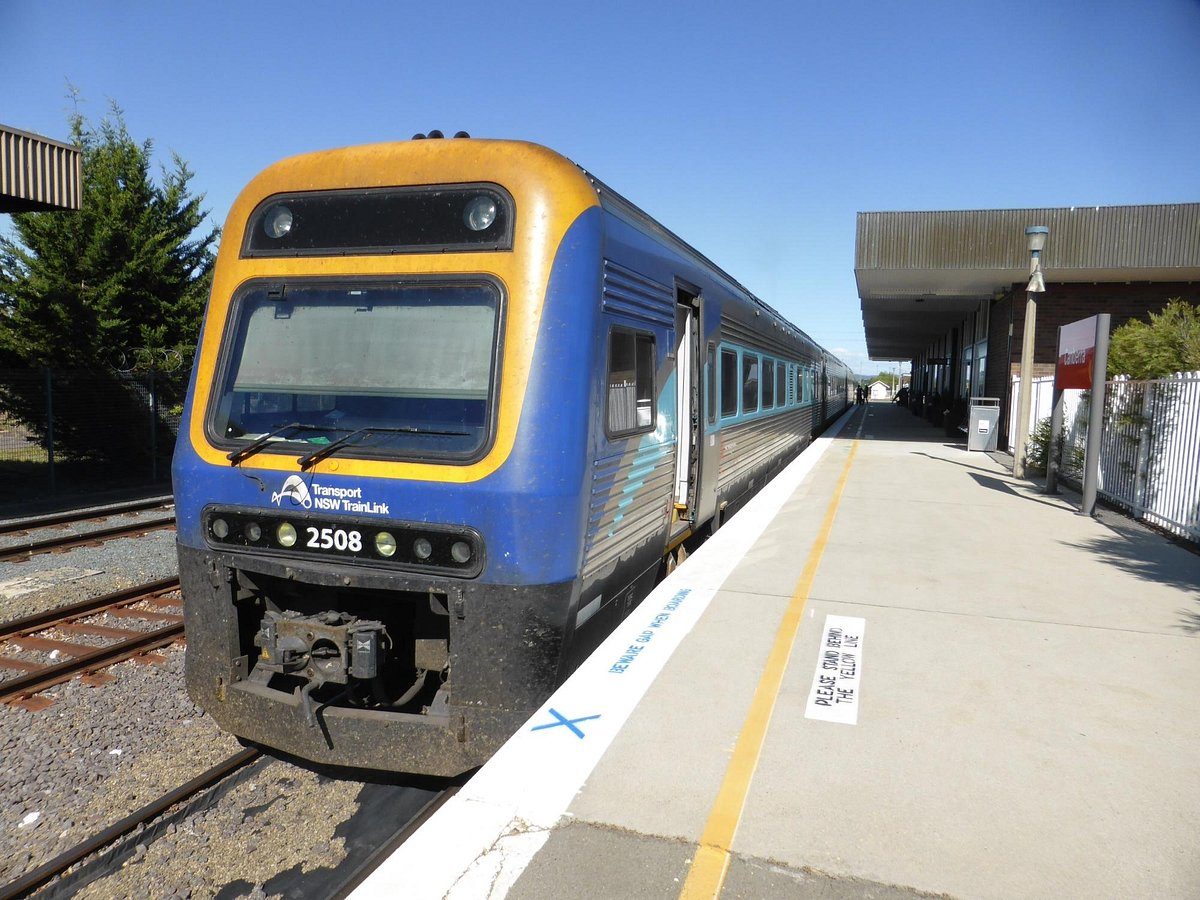
The Canberra-Sydney train at Kingston Station: in 2023, the four-and-a-half-hour journey is ridiculous. Photo: NSW Trainlink.
It’s a long haul to Sydney on Canberra’s third-world train service.
Despite any number of grand visions for a high-speed rail network in this country and more modest investigations of a faster connection with the NSW capital, not much has happened and the trip still takes more than four hours from a terminus that continues to be an embarrassment.
Hopes were again raised recently with a new plan from Fastrack Australia spruiking the Canberra-Sydney corridor – including a new line from Goulburn to Yass and a branch line from Gunning to Canberra Airport – as a perfect test case to show the benefits of fast rail.
It proposed a staged transition for the Sydney-Melbourne route over the next 30 years.
But the first work would be straightening out the track in the Southern Highlands where trains slow to a crawl as it winds around the hills. That could bring the Canberra-Sydney journey back to three hours, comparable with a car trip.
Over time, and with a new line and trains, that would be just 1.5 hours by 2050.
Yes, we have heard it all before.
The Albanese Government has put fast rail back on the agenda by re-establishing the High Speed Rail Authority. However, that only seems to have prompted the Perrottet Government in NSW to shy away from previous commitments and pass the buck to the Commonwealth.
In any case, its priority was the Newcastle-Wollongong corridor, not rail to Canberra.
Professor Andrew McNaughton, the chair of the authority that manages the UK’s high-speed rail line, whose report to the NSW Government is still under wraps, believes basic improvements to the Canberra-Sydney track would deliver a comparable service to road travel and be a start on a faster rail network in Australia, and the benefits it would bring.
It doesn’t seem much to ask but, as ever, it will come down to political priorities.
Anthony Albanese loves his infrastructure, but in post-COVID straitened times there are more highly populated corridors to service and, frankly, providing a faster train service to Canberra will struggle to compete with the demands from other electorates.
For the national capital, the focus will more likely be on helping fund light rail in Canberra.
The prospect of a Labor Government in NSW after 25 March may change the equation, so Chief Minister Andrew Barr should again be on the train to Sydney to plead the case for at least improving the track because it is not just about faster connections but opening up land along the corridor to new development so population can be spread inland and not be so concentrated in Sydney or along the coast.
With a housing crisis that will be exacerbated by the resumption of migration, easing the pressure on the eastern capitals will be desperately needed.
The increasingly busy corridor to Goulburn and Canberra would easily serve that purpose.
That should be important to any NSW Government.
The political odds may be stacked against a faster rail service between the two capitals, but that does not lessen the case.
All the ACT’s political representatives should be on board.












